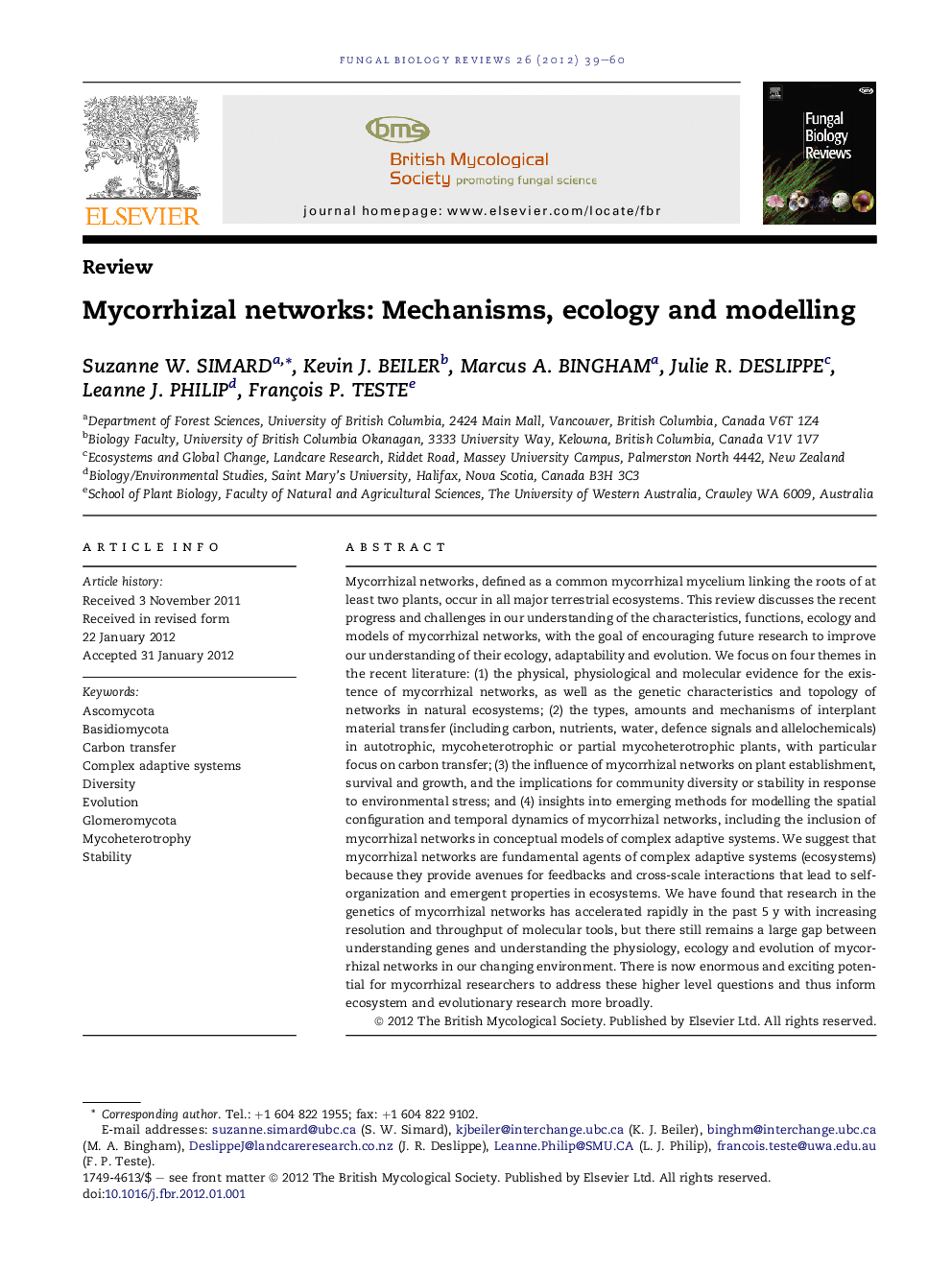| Article ID | Journal | Published Year | Pages | File Type |
|---|---|---|---|---|
| 2180508 | Fungal Biology Reviews | 2012 | 22 Pages |
Mycorrhizal networks, defined as a common mycorrhizal mycelium linking the roots of at least two plants, occur in all major terrestrial ecosystems. This review discusses the recent progress and challenges in our understanding of the characteristics, functions, ecology and models of mycorrhizal networks, with the goal of encouraging future research to improve our understanding of their ecology, adaptability and evolution. We focus on four themes in the recent literature: (1) the physical, physiological and molecular evidence for the existence of mycorrhizal networks, as well as the genetic characteristics and topology of networks in natural ecosystems; (2) the types, amounts and mechanisms of interplant material transfer (including carbon, nutrients, water, defence signals and allelochemicals) in autotrophic, mycoheterotrophic or partial mycoheterotrophic plants, with particular focus on carbon transfer; (3) the influence of mycorrhizal networks on plant establishment, survival and growth, and the implications for community diversity or stability in response to environmental stress; and (4) insights into emerging methods for modelling the spatial configuration and temporal dynamics of mycorrhizal networks, including the inclusion of mycorrhizal networks in conceptual models of complex adaptive systems. We suggest that mycorrhizal networks are fundamental agents of complex adaptive systems (ecosystems) because they provide avenues for feedbacks and cross-scale interactions that lead to self-organization and emergent properties in ecosystems. We have found that research in the genetics of mycorrhizal networks has accelerated rapidly in the past 5 y with increasing resolution and throughput of molecular tools, but there still remains a large gap between understanding genes and understanding the physiology, ecology and evolution of mycorrhizal networks in our changing environment. There is now enormous and exciting potential for mycorrhizal researchers to address these higher level questions and thus inform ecosystem and evolutionary research more broadly.
Graphical AbstractFigure optionsDownload full-size imageDownload high-quality image (93 K)Download as PowerPoint slideHighlights► Mycorrhizal networks have a scale-free spatial pattern in natural ecosystems. ► Carbon flux through networks increases with shade and mycoheterotrophy. ► Networks can facilitate early plant survival, growth and defence responses. ► Feedbacks through networks may affect ecosystem diversity and stability. ► Network patterns and processes are consistent with complex adaptive system models.
